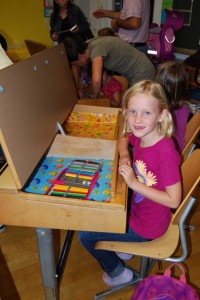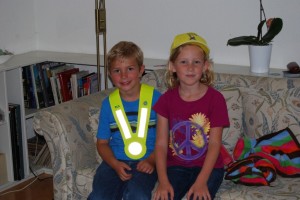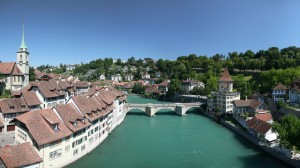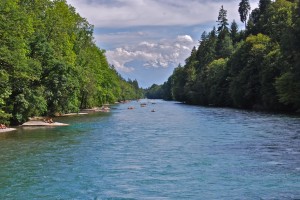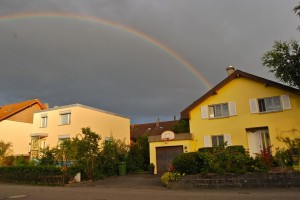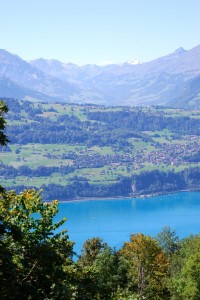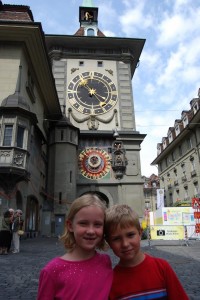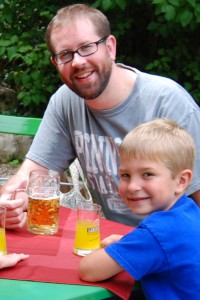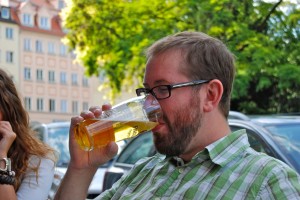For those of you who don’t have young children, this title is a quote from the movie “Finding Nemo” that I thought was appropriate for this post for two reasons. First, in the movie when things get difficult, Dory (the blue fish) says, “Just keep swimming, just keep swimming…” I’m certainly not complaining, but lets just say that the first week of school was an adjustment for everyone. Secondly, we have had some of the most beautiful and hot weather of the summer. During a whole week of sunny, 80-degree days, we spent a lot of time in our swimsuits.
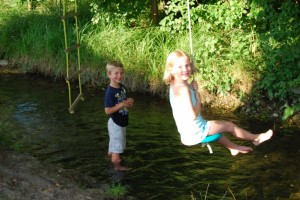 We went one afternoon to the local, outdoor swimming complex. We have been there twice before, but this time the kids found some friends from school to play with, which was great. We spent another afternoon at our little creek down the road. It’s small and shallow, but still cool (okay, cold), clean and refreshing. There are rocks for throwing and a rope ladder and swing.
We went one afternoon to the local, outdoor swimming complex. We have been there twice before, but this time the kids found some friends from school to play with, which was great. We spent another afternoon at our little creek down the road. It’s small and shallow, but still cool (okay, cold), clean and refreshing. There are rocks for throwing and a rope ladder and swing.
Over the weekend we took an day trip to the town of Murten. It is a fantastic, medieval town a little west of Bern on the Murtensee (Lake Murten). We swam in the lake,  which was some of the warmest water for swimming that we’ve found in Switzerland (though that’s not saying much!). We also played at a park near the lake, watched the ducks and the fish, walked through the town, and Emily and I walked along the top of the ancient wall enclosing the old city. We forgot the camera, but I snapped a few shots with my iPhone.
which was some of the warmest water for swimming that we’ve found in Switzerland (though that’s not saying much!). We also played at a park near the lake, watched the ducks and the fish, walked through the town, and Emily and I walked along the top of the ancient wall enclosing the old city. We forgot the camera, but I snapped a few shots with my iPhone.
On Sunday, we slapped our suits on once again, and headed to the Aare river. We biked further down the crowded trail along the river past many beautiful outcroppings until we found one that was not claimed and had some nice shallow places for the kids to swim. It’s beautiful, and fun to watch all the swimmers and rafters floating down the river. Joe jumped in again (this time without his glasses) and glided a little further down the river, enjoying the view of the blue water flowing off to the horizon with mountains in the background.
We’ve been told that this kind of weather is rare in Switzerland, so we plan to continue enjoying it as long as wek can!

